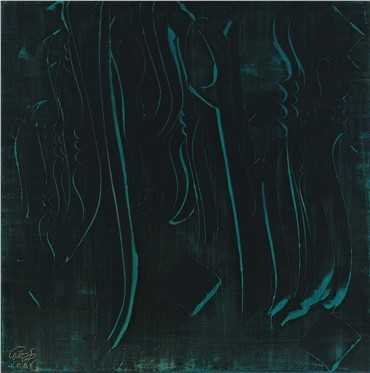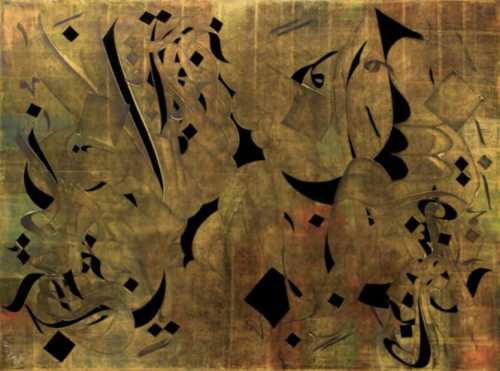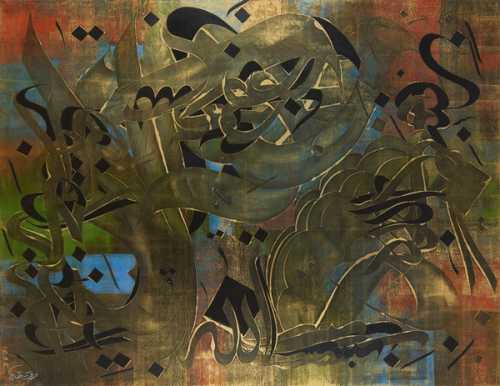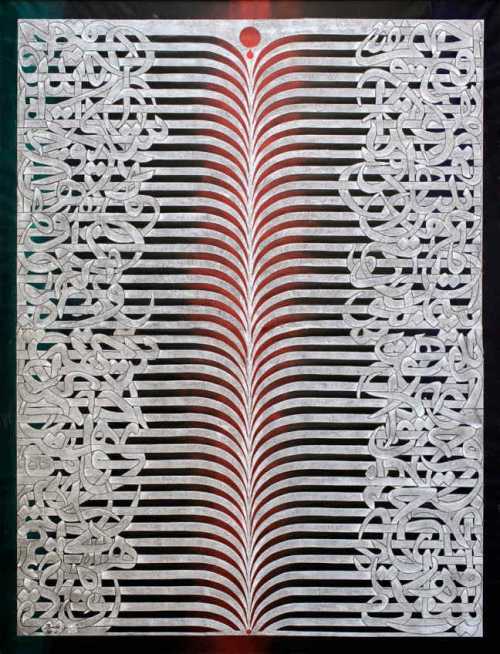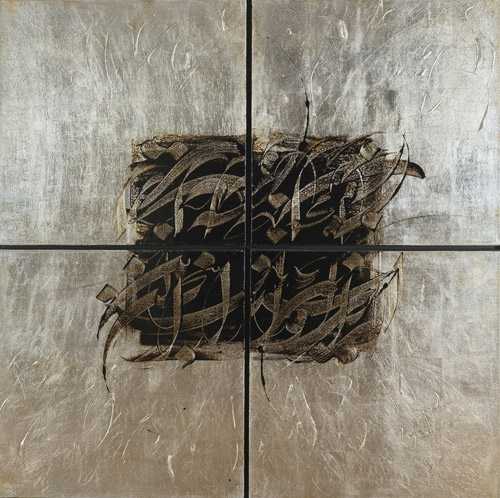- Untitled 2008
- metallic paint and oil on canvas
- Painting, Calligraphy Painting
- 145 * 145 cm
- signed and dated in Farsi (lower left)
Artwork Description
The formal basis of Sedaghat Jabbari's compositions is the free-flowing repetition of siahmasq, or rough draft calligraphy. Siahmasq does not rely on the textual content of words, but rather is the free application of colour guided by calligraphic techniques. As such, the result shares much with Abstract Expressionism.
Manuscript writing as the most practical form of calligraphy does not offer an artistic definition of space, since it is closely tied to illumination and lay outing. Naturally, the traditional calligraphy of Iran, even in its non-functional form, is not meant to be hung on a wall. Works of calligraphy demand close inspection to reveal delicate details and perhaps this is the most obvious difference between traditional and contemporary calligraphy. On the other hand, there are no limits to siahmashq with its unconstrained use of space and the abstract quality of its shapes and forms. In traditional calligraphy the use of space in relation to the placement of elements on the page is one that should reflect a divine order. A cruciform formation, for example, has a symbolic content, possessing particular spiritual and metaphysical qualities, and appeals to one of the most ancient human archetypes. Jabbari combines traditional and modern tools and uses the reed pen, gold leaf and traditional paint together with the brush, oil paints and canvas. In his works, we are sometimes witness to indistinct images of trees in the miniature style, the simurgh and other elements of Iranian painting in which calligraphy is lost and is only detectable upon closer examination.
Manuscript writing as the most practical form of calligraphy does not offer an artistic definition of space, since it is closely tied to illumination and lay outing. Naturally, the traditional calligraphy of Iran, even in its non-functional form, is not meant to be hung on a wall. Works of calligraphy demand close inspection to reveal delicate details and perhaps this is the most obvious difference between traditional and contemporary calligraphy. On the other hand, there are no limits to siahmashq with its unconstrained use of space and the abstract quality of its shapes and forms. In traditional calligraphy the use of space in relation to the placement of elements on the page is one that should reflect a divine order. A cruciform formation, for example, has a symbolic content, possessing particular spiritual and metaphysical qualities, and appeals to one of the most ancient human archetypes. Jabbari combines traditional and modern tools and uses the reed pen, gold leaf and traditional paint together with the brush, oil paints and canvas. In his works, we are sometimes witness to indistinct images of trees in the miniature style, the simurgh and other elements of Iranian painting in which calligraphy is lost and is only detectable upon closer examination.
More lots by Sedaghat Jabbari
Realized Price
65,571 USD
Min Estimate
36,411 USD
Max Estimate
52,092 USD
Average Artwork Worth
+49.091%
Average Growth of Artwork Worth
Sales Performance Against Estimates
Average & Median Sold Lot Value
2021 - 2025
Performance vs. Estimate
2021 - 2025
Sell-through Rate
2021 - 2025
Similar Artworks
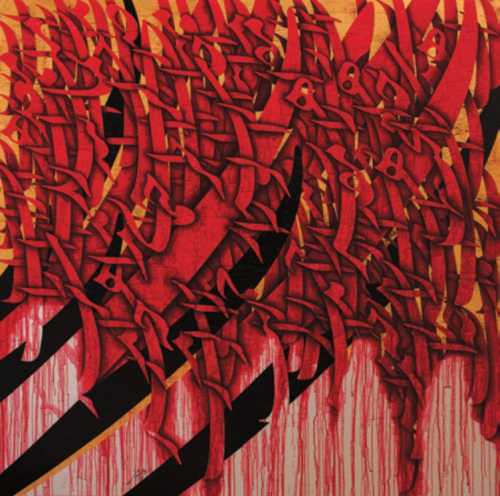
Praising Hakim Omar Khayyam
Estimation
8,000,000,000﷼
13,333 USD
-
12,000,000,000﷼
20,000 USD
Realized Price
18,700,000,000﷼
31,167 USD
87%
Sale Date
Tehran
-
5 July 2024
